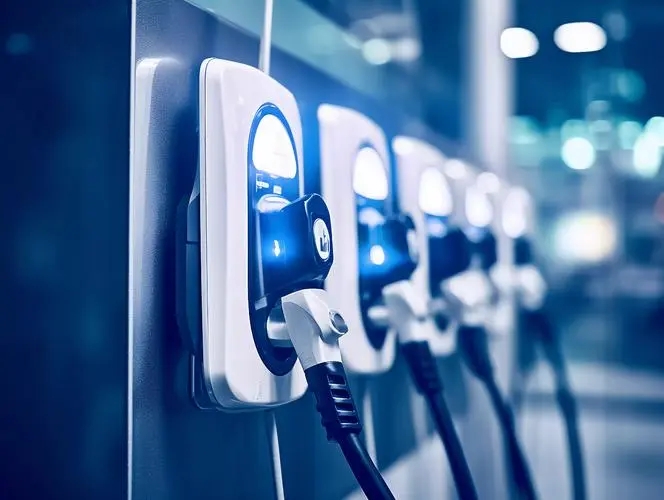nuus
How to Build an AC-DC Converter
Author: ZYG Power Module Time: 2023-4-15
An AC-DC converter is an electronic device that converts alternating current (AC) to direct current (DC). This is a common requirement in electronic circuits as most electronic components require DC for proper operation. In this article, we will discuss how to build an AC-DC converter.
Step 1: Determine the Voltage and Current Requirements
The first step in building an AC-DC converter is to determine the voltage and current requirements for your application. This will depend on the specific electronic components you are using. For example, if you are powering an LED, you may require a low voltage (e.g. 5V) and a low current (e.g. 20mA). On the other hand, if you are powering a motor, you may require a higher voltage (e.g. 24V) and a higher current (e.g. 2A).
Step 2: Choose the Type of Converter Circuit
Once you have determined the voltage and current requirements, you need to choose the type of converter circuit you want to use. There are two main types of AC-DC converter circuits: the half-wave rectifier and the full-wave rectifier.
The half-wave rectifier circuit only uses one diode to convert the AC input to DC output. This is a simple and inexpensive circuit, but it has a low efficiency and produces a lot of ripple on the output.
The full-wave rectifier circuit uses four diodes to convert the AC input to DC output. This circuit is more complex and expensive, but it has a higher efficiency and produces less ripple on the output.
Step 3: Build the Circuit
Once you have chosen the type of converter circuit, you can start building the circuit. The components required for the circuit will depend on the specific design you have chosen. However, most converter circuits will require the following components:
– Diodes: These are used to rectify the AC input to DC output.
– Capacitors: These are used to filter out the ripple on the output.
– Resistors: These are used to limit the current flow and voltage drop in the circuit.
– Transformer: This is used to step down the high voltage AC input to a lower voltage AC output.

Step 4: Test the Circuit
Once the circuit is built, you need to test it to ensure that it is working properly. Connect the AC input to the circuit and measure the DC output using a multimeter. The output voltage and current should match the requirements for your application. If the output is not correct, you may need to adjust the circuit components or troubleshoot any issues.
In conclusion, building an AC-DC converter requires careful consideration of the voltage and current requirements, the type of converter circuit, and the components required for the circuit. With the right design and testing, you can build a reliable and efficient AC-DC converter for your electronic applications.
vorige: How to Build an AC-DC Converter
volgende: Generating AC-DC Power Conversion for Efficient Energy Transfer
relevante inligting
-
2023-7-11
Exploring the Efficiency and Performance of Bidirectional DC-DC Converters
Introduction: Bidirectional DC-DC converters have gained significant attention in recent years due to their ability to efficiently transfer power bidirectionally between two different DC voltage sources. These converters are crucial in various applications, including renewable energy systems, electric vehicles, and energy storage systems. This article aims to explore the efficiency and performance of bidirectional DC-DC converters, shedding light on their advantages, challenges, and potential improvements. 1. Working Principle of Bidirectional DC-DC Converters: Bidirectional DC-DC converters, also known as buck-boost converters, use power semiconductors to convert DC voltage from a source to a desired voltage level. These converters can work in both step-up (boost) and step-down (buck) modes, allowing power to flow in either direction. By employing appropriate control algorithms, bidirectional...
Sien besonderhede -
2023-4-17
AC-DC Converter: Converting Alternating Current to Direct Current
AC-DC converters are electronic devices that convert alternating current (AC) to direct current (DC). They are commonly used in power supplies for electronic devices, such as computers, televisions, and mobile phones. The converter changes the AC input voltage to a DC output voltage that can be used to power these devices. The AC-DC converter operates by rectifying the AC input voltage to a pulsating DC voltage. This is achieved using a rectifier, which is typically a diode bridge. The rectifier allows current to flow in only one direction, effectively converting the AC voltage to a series of positive and negative voltage pulses. After rectification, the DC voltage still contains some ripple, or fluctuations in voltage. To remove this ripple, a...
Sien besonderhede -
2024-6-21
Power Module Performance Optimization: The Key to Improving Equipment Stability
In today's high-tech era, the stability and reliability of equipment performance is critical for various application scenarios. As the heart of the equipment, power module performance optimization plays an important role in improving overall equipment stability. This article explores the importance of power module performance optimization and introduces some effective optimization methods. 1. The Importance of Power Module Performance Optimization The power module is an indispensable part of electronic equipment. It is responsible for providing a stable power supply to the device. Its performance directly affects the operational stability and working efficiency of the equipment. If the performance is poor, it can cause problems such as voltage fluctuation and current instability in the equipment, which in turn affects the normal...
Sien besonderhede -
2023-11-27
Fully Modular Power Supply: The Ultimate Solution for Efficient and Customizable Energy Management
In today's technology-driven world, energy management has become a critical concern for individuals and businesses alike. The demand for electricity is increasing at an unprecedented rate, making it essential to find innovative solutions to optimize energy consumption. One such solution is the fully modular power supply, which offers efficient and customizable energy management capabilities. A fully modular power supply is a type of power supply unit (PSU) that allows the user to connect only the necessary cables and detach the unused ones. Unlike traditional PSUs, which come with a fixed set of cables, fully modular PSUs provide flexibility and versatility in managing power distribution. One of the key advantages of a fully modular power supply is its efficiency. By eliminating...
Sien besonderhede -
2022-11-8
Hoe om jou motor van wisselstroom na GS om te skakel
What are the benefits of converting your car from AC to DC power? There are a number of benefits to converting your car from AC to DC power. Perhaps the most obvious is that you will save money on gas. In addition, converting your car to DC power will also make it more environmentally friendly, as it will produce fewer emissions. Finally, converting to DC power will also make your car more reliable, as it will be less likely to break down. How do you convert your car from AC to DC power? There are a few ways that you can convert your car from AC to DC power. The first way is to buy an inverter. An inverter will...
Sien besonderhede -
2023-4-18
Building a 120 Volt AC Power Supply for 3 Volts DC
Introduction: In this article, we will discuss how to build a 120-volt AC power supply for 3 volts DC. This process requires some basic knowledge of electronics and safety measures. We will provide step-by-step instructions to help guide you through the process. Materials Required: - Transformer (120V to 12V AC) - Bridge rectifier - Capacitor (1000uf, 16V) - Voltage regulator (LM7803) - Heat sink - Wires - Soldering iron and solder - Wire stripper - Pliers - Safety glasses Step 1: Safety Precautions Before starting any electrical project, it is essential to take safety precautions to avoid electrical shocks or fires. Wear safety glasses to protect your eyes from soldering fumes. Ensure that the circuit is unplugged from the power...
Sien besonderhede


















